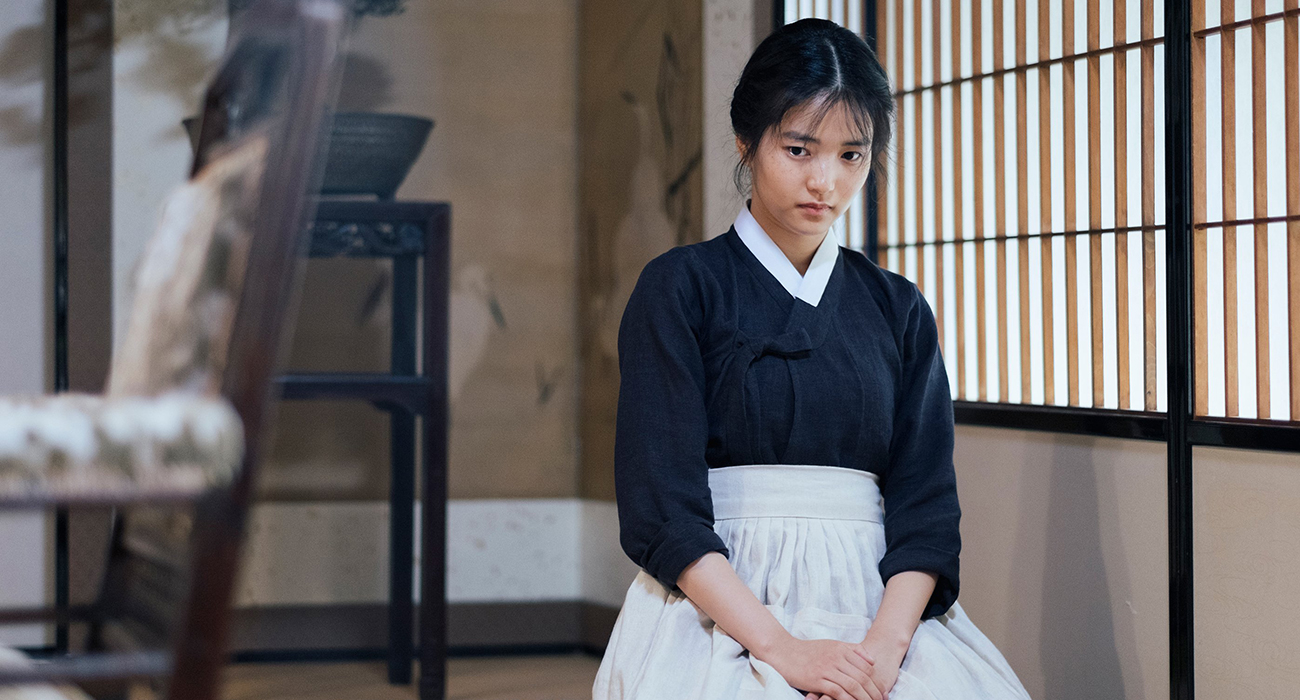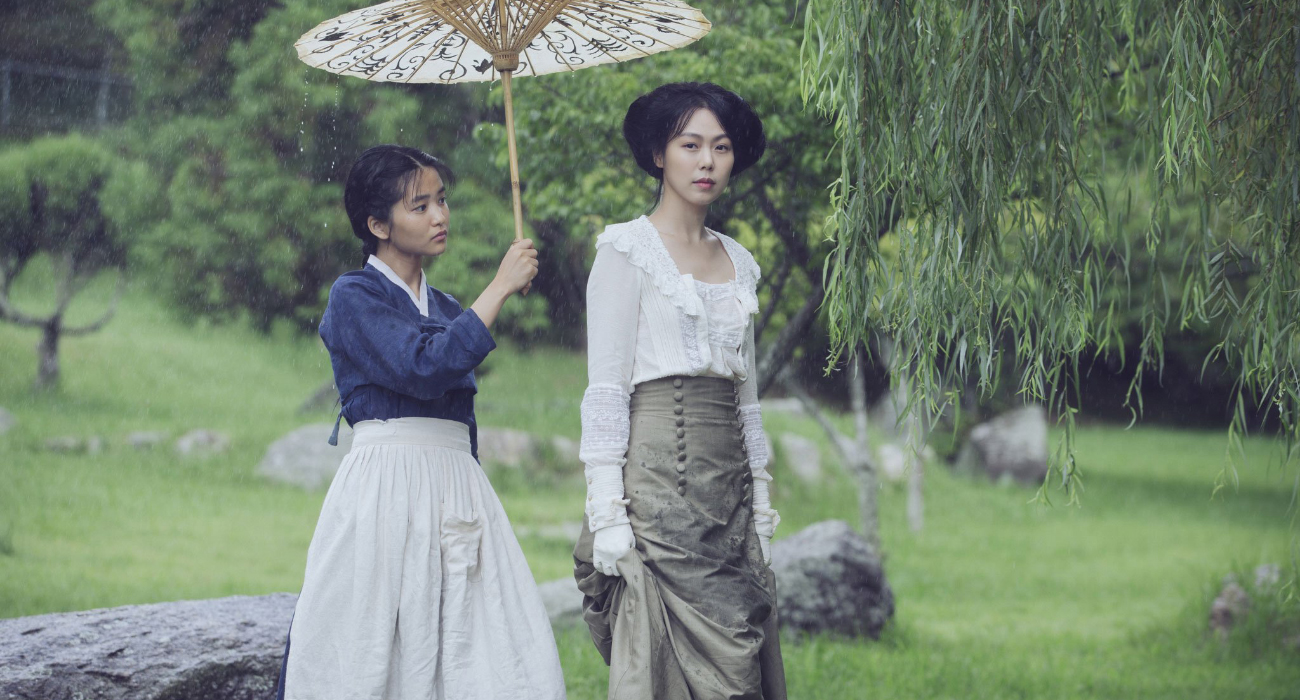EDIT: Accompanying this review is a video essay we produced for The Handmaiden, which touches on the same themes that Natalie explores in her review. See the full video here.
—–
Gloves have long been a symbol of eroticism due to its proximity with bare skin. Gloves cover one of the most expressive parts of the body, touch what the wearer touches and accentuates ones’ actions and gestures. They were also a symbol of class — elegant gloves worn by the aristocrats were not just a fashion item or for protection, but a symbol of privilege that covered soft, unblemished skin that the calloused hands of the working classes were excluded from.
In Park Chan-wook‘s latest film, The Handmaiden, loosely adapted from Sarah Waters’ novel Fingersmith, gloves take on those well known symbols of concealment, protection, eroticism and class and subvert them. This is director Park at his most unabashedly feminine. Following the success of Blue is the Warmest Color and Carol in recent years at Cannes, The Handmaiden similarly features a lesbian love story that explores class and identity. What sets The Handmaiden apart is its playfulness and blackly comic tone even when dealing with heavy themes of abuse and misogyny.

The story of The Handmaiden is as convoluted as anything, a given since it’s based on a Gothic novel. In 1930s Japan-occupied Korea, small-time thief Sookee (newcomer Kim Tae-ri) is hired to be the handmaiden of a noblewoman, Lady Hideko (Kim Min-hee) by a Count Fujiwara (Ha Jung-woo). The Count is really a conman, and plans to marry Lady Hideko and seize her inheritance. If the con succeeds, Sookee gets a cut of the profits.
Lady Hideko appears to be the classic female of any Gothic story. She is a fragile, sheltered heiress who comes to rely on Sookee immensely as a companion for emotional support. When Count Fujiwara comes courting Hideko, Sookee is meant to be her confidante and convince her to marry him so she can be free of her perverse uncle (Choi Jin-woong). Both Hideko and Sookee become increasingly conflicted with their individual plans for freedom as they fall for each other.
Director Park’s usual themes of lust, perversion and cruelty continue with The Handmaiden, but these themes take a backseat to focus on telling a story of duality, female identity and the love story between two women. Gloves thus become a symbol of these dominant themes.

Female identity is presented as duality and performance. Like in The Taming of the Shrew, we learn that to be female in a patriarchal society is to perform a socially accepted role for self-preservation. Both Hideko and Sookee are shown ‘performing’ in a traditional sense — Hideko when she does readings for her Uncle and his book club and Sookee when she is playing the role of a dutiful handmaiden. We witness Hideko cruelly punished as a child for speaking against her uncle, and understand the need for women to ‘perform’ the role of the demure, submissive female to protect themselves.
Within these roles however, there is another mask they put on to conceal their true selves, even in private. These conflicting multiple identities lead to possible self destruction for both characters and it is only through self-discovery and the love they share that both Hideko and Sookee are set free to drop one mask, while maintaining the one they have in public, which they then exploit to their advantage.
Performance is symbolised by the gloves. In an early scene, Hideko reveals to Sookee an entire chest of drawers dedicated entirely to gloves. She wears them in nearly every scene — when she’s painting, at dinner, and most notably the black ones she wears with a kimono when she’s doing readings for her uncle. The only time when Hideko takes them off are in scenes with Sookee in private. When the gloves come off, their absence is strikingly sensual, and Park explores the erotic bond and emotional intimacy between the two characters. One particularly significant scene is when Hideko brings herself to climax from Sookee’s singing in a separate room — Park’s camera lingers for a few moments on the gloves she has removed.

It must also be said that the multiple turns the two central characters take would not be possible without a strikingly charismatic debut from Kim Tae-ri and Kim Min-hee’s ability to express so much with so little. The chemistry between the two actresses is effortless as they convey a relationship’s arc from simmering tension boiling over into raw sensuality and finally settling into a warm tenderness.
On the technical side, Park’s obsession with detail, art and production design is at its peak here as he plays hard with the dominant theme of duality. The Victorian era meets traditional style Japanese house is a staggering achievement in set design. The interiors are oppressively ornate, heightened by Park’s camera work through the maze-like house, hinting at the Uncle’s perverse secrets. Similarly, all of the costumes and props are loaded with double meanings, from Sookee’s butterfly hairpin, to Hideko’s doll to the shoes Hideko gifts Sookee.
Park has come a long way with his female characters since he made the switch to tell stories about women with Lady Vengeance. The Handmaiden is just a top notch production all around, coupled with a thrilling pace and a timely love story. For all its extremities and quirks, it just may be Park’s most accessible and best film to date, with a sign of even greater things to come.
